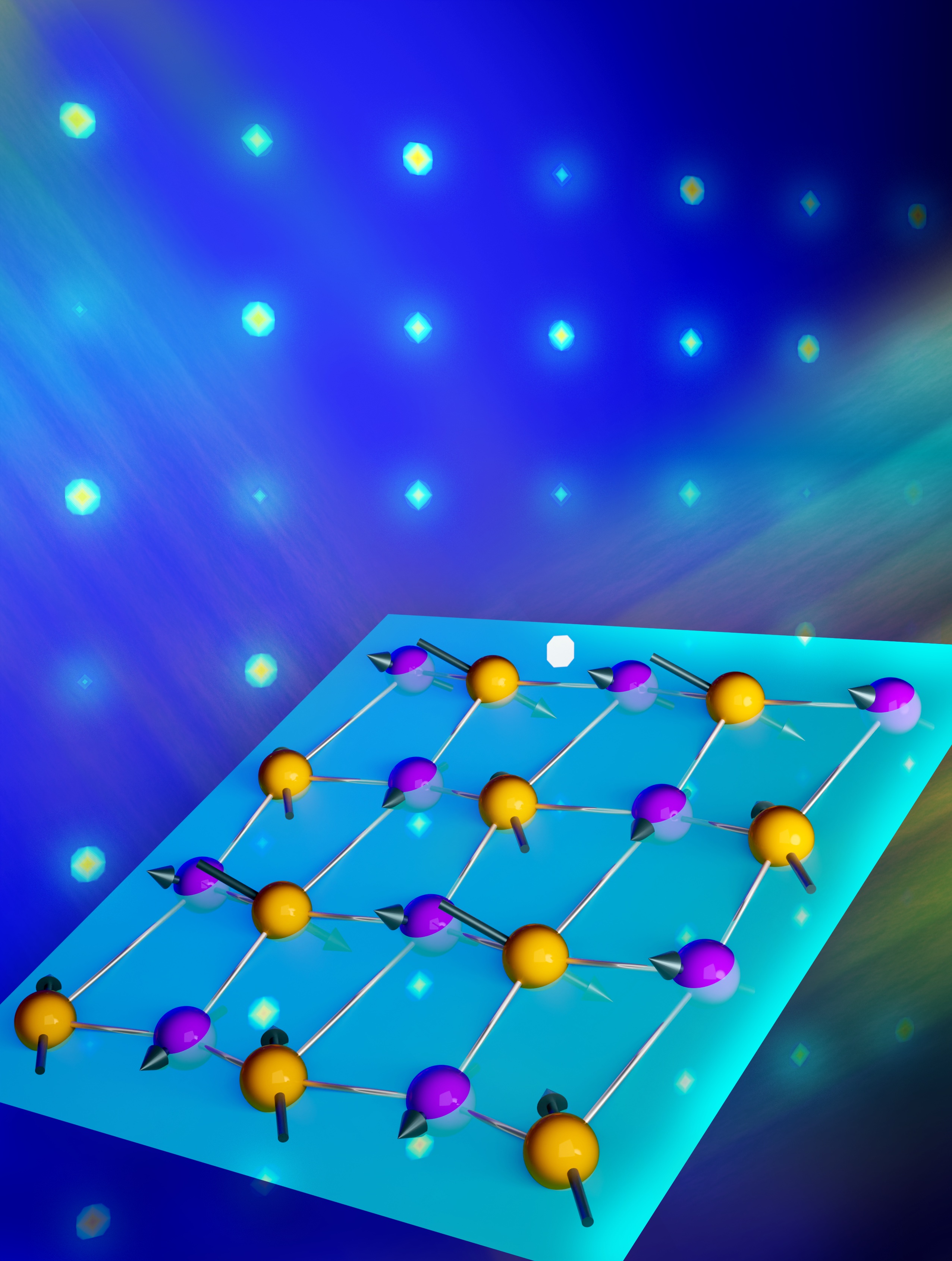Nanocrystals Lock-In the Correct Phase
Precise control of surface chemistry leads to efficient, stable perovskite solar cells.

The Science
The physical and chemical properties of some materials change when they are confined to fit into the miniscule volume of a nanoparticle. Researchers have discovered that the internal structure of all-inorganic perovskite (CsPbI3) nanoparticles is different than bulk formulations of the same material. In fact, the phase that has highly desirable optical absorption properties becomes more stable at the nanoscale than the phase typically found in larger crystals. The team built on this discovery. They developed a “glue” that locks the nanocrystals together into conductive arrays. The arrays retain their excellent properties.
The Impact
These perovskite nanocrystals can absorb light throughout the visible region of the solar spectrum. The crystals can be easily deposited and processed into conductive thin films at low temperatures. The result? The material can be incorporated into solar cell architectures that offer promising efficiency and stability. In this work, researchers demonstrated a power conversion efficiency of 13.4 percent in photovoltaic cells made from CsPbI3 nanocrystal arrays. This is a world record for solar cells made from small particles known as quantum dots.
Summary
Hybrid organic-inorganic halide perovskites have emerged as an exciting new material for solar cells with the promise of high efficiency and relatively easy processing. An all-inorganic perovskite would retain these advantages but is expected to be less susceptible to environmental degradation. Cubic α-CsPbI3 is the all-inorganic perovskite with the most appropriate band gap for absorbing sunlight, but this crystal structure is disfavored in bulk materials at room temperature relative to the orthorhombic phase. In this work, enabled by improved synthesis and purification routes, researchers discovered that a stability reversal occurs at the nanoscale: in quantum dots, cubic α-CsPbI3 becomes more stablethan orthorhombic CsPbI3. The resulting highly uniform size- and phase-controlled inorganic α-CsPbI3 quantum dots can be layer-by-layer spin-coated into dense arrays. The research team developed a post-coating treatment based on formamidinium iodide that greatly improves the electronic coupling between the quantum dots, thereby doubling the carrier mobility of the array. Assembly of a photovoltaic cell that relies on this electronically coupled array as the light absorbing component achieved a certified power conversion efficiency of 13.4 percent, which is the best efficiency from a quantum dot-based solar cell to date. Moreover, this system produces a considerably larger photovoltage than other solar cell technologies with a similar absorption onset.
Contact
Joseph M. Luther
National Renewable Energy Laboratory, Chemistry and Nanoscience Center
joey.luther@nrel.gov
Funding
Funding for this work was provided by the Department of Energy (DOE), Office of Science, Office of Basic Energy Sciences through the Center for Advanced Solar Photophysics (CASP), an Energy Frontier Research Center. Device durability and structural phase characterization were supported by the hybrid perovskite solar cell program of the National Center for Photovoltaics funded by the Department of Energy, Office of Energy Efficiency and Renewable Energy, Solar Energy Technologies Office.
Publications
E.M. Sanehira, A.R. Marshall, J.A. Christians, S.P. Harvey, P.N. Ciesielski, L.M. Wheeler, P. Schulz, L.Y. Lin, M.C. Beard, and J.M. Luther, “Enhanced mobility CsPbI3 quantum dot arrays for record-efficiency, high-voltage photovoltaic cells.” Science Advances 3, eaao4204 (2017). [DOI: 10.1126/sciadv.aao4204]
A. Swarnkar, A.R. Marshall, E.M. Sanehira, B.D. Chernomordik, D.T. Moore, J.A. Christians, T. Charkrabarti, and J.M. Luther, “Quantum dot-induced phase stabilization of α-CsPbI3 perovskite for high-efficiency photovoltaics.” Science 354, 6308 (2016). [DOI: 10.1126/science.aag2700]
Related Links
National Renewable Energy Laboratory press release: Nanoscale confinement leads to new all-inorganic perovskite with exceptional solar cell properties
Highlight Categories
Performer: University , DOE Laboratory
Additional: Collaborations , EERE



